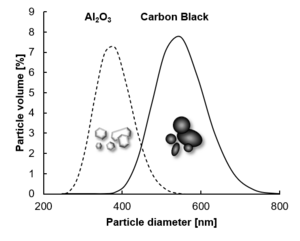3D-printing-paste
Contents
Introduction
Solid Freeform Fabrication uses many different techniques. One is the freeforming of extruded strands of ceramic pastes, which exhibits some important features:
- No excess material needed
- Coextrusion is possible
- Waterborne feedstocks are common
- Nowadays there are lots of cheap extrusion devices on the market
- High density/low porosity and thus high strengths are feasible
Requirements for the feedstock
- A high solids loading to counteract shrinkage and cracking due to drying, sintering or binder burn-out
- Well dispersed particles to ensure a constant flow and to avoid flaws due to agglomerates
- Entrapped air should be minimized to avoid pores in the ceramic
- Solvent migration and sedimentation of particles must be prevented to ensure constant flow and storage stability
- Suitable rheology for the applied process to ensure shape retention and sufficient merging of the filaments
- Suitable particle size and distribution for the applied nozzle dimensions
- A binder phase that is easy to drain, dry or burn out
- Suitable solidification kinetics
- Suitable interface properties for adhesion and fusion of filaments
- Sufficient green strength, either to be obtained by the binder or the particle size distribution.
Most preparation routes for RC and FEF feedstocks follow the same principle.
The first step to obtain a feedstock is preparing a homogeneous dispersion having a high solids loading (mostly about 50 vol%). The particles are dispersed in the medium (mostly water) by agitation with shakers, ball mills, planetary mills or ultrasonic probes until particle separation is achieved. When using wide particle size distributions, the smaller particles facilitate the slip and rearrangement of the bigger particles during extrusion, which is favorable for flow through small orifices. The results are feedstocks of higher solids loading, lower viscosity and an overall drop of extrusion pressure. It must be noted that increasingly high particle concentrations are accompanied by severe changes of the rheological properties, i.e. yield stresses develop and frequency-dependent sol-gel transitions occur, thus small changes in solids loading and processing might have large effects on the result. A polymeric viscosifier or binder is added to prevent sedimentation, reagglomeration and solvent migration to ensure consistent extrusion and to provide green strength. After complete dissolution of the viscosifier the suspension can be degassed using vacuum or centrifugation. If a colloidal gel shall be applied to EFF the slurry is coagulated by adding salts, pH-modifiers or charged polymers such as Polyethylene-Imine.
Recipe examples of an alumina and a carbon black paste:
| Component | Alumina paste | Mass Percent | Carbon black paste | Mass percent |
|---|---|---|---|---|
| Powder species | CT3000SG | 78-79 | Luvomaxx N990 | 64 |
| Dispersant | Darvan C-N | 0.4 | Darvan 670 | 0.3 |
| Solvent | Water | 19-20 | Water | 30 |
| Thickener | Bermocoll E230/320 FQ/PEG | 0.4 | PEG 10 kDa | 3.4 |
| Coagulant | Ammonium-acetate | 1.5-2.6 | Ammonium-acetate | 3.2 |
To achieve lower sintering shrinkage due to higher particle packing, bimodal/trimodal powders can be used, which are readily available on the market.
How to prepare the paste
- Mix water and dispersant in a PE-bottle. Make sure to find the proper dispersant amount, which correlates with the surface area of the powder. Better use a slight excess, as the surace area might increase during milling.
- Add grinding media (zirconia or alumina, 3 - 20 mm diameter, some big spheres are useful)
- Add the powder successively and shake between additions. Use decreasing additions, i.e. 50%, 25%, 12,5% ...
- Put in a shaker für several hours.
- Add thickener
- Put in shaker for several hours until there are no remaining lumps.
- Prepare a lid for the PE-Bottle with a sieve in it, so the milling balls can be separated from the slurry
- Now add the coagulant as an aqueous solution and stir the paste. The stiffness of the paste can be tuned by the amount and valency of the salt. A centrifugal planetary mixer is optimum to mix and remove air bubbles.
